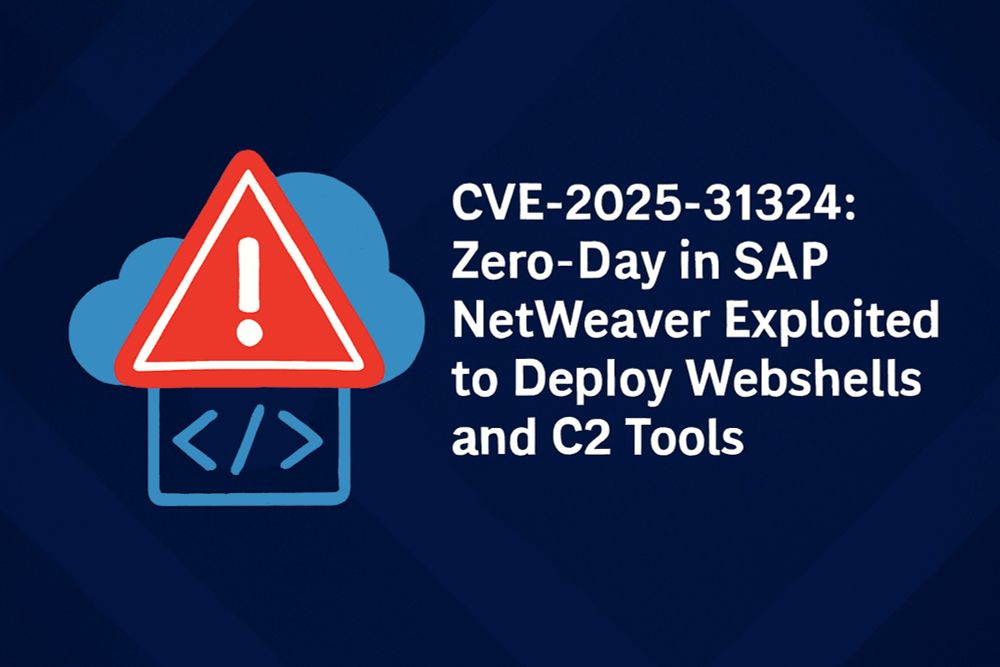
We looked at some older custom tooling from APT34 and Turla, and some open source tools like ASPXSpy, and SharpyShell
We looked at some older custom tooling from APT34 and Turla, and some open source tools like ASPXSpy, and SharpyShell
I hadnt realized that was new, thanks!
I hadnt realized that was new, thanks!
Looking over some weblogs on my way back from class in Baltimore, I feel a reminder is appropriate that (a) weblogs are still a thing and (b) what some of the common webshells are that attackers are looking for.
#hackernews #news
Looking over some weblogs on my way back from class in Baltimore, I feel a reminder is appropriate that (a) weblogs are still a thing and (b) what some of the common webshells are that attackers are looking for.
#hackernews #news

cybersecuritynews.com/sap-netweave...

cybersecuritynews.com/sap-netweave...



CVSS V3.1: HIGH
Administrative Management System from Wellchoose does not properly validate uploaded file types, allowing remote attackers with regular privileges to upload and execute webshells.
#security #infosec #cve-alert
CVSS V3.1: HIGH
Administrative Management System from Wellchoose does not properly validate uploaded file types, allowing remote attackers with regular privileges to upload and execute webshells.
#security #infosec #cve-alert
Details: securityonline.info/cve-2025-313...

Details: securityonline.info/cve-2025-313...
https://isc.sans.edu/podcastdetail/9630

https://isc.sans.edu/podcastdetail/9630

cybersecuritynews.com/sap-netweave...

cybersecuritynews.com/sap-netweave...

Ever so often, I see requests for files in .well-known recorded by our honeypots. As an example:
#hackernews #news
Ever so often, I see requests for files in .well-known recorded by our honeypots. As an example:
#hackernews #news
Commvault vulnerability exploited remotely! Learn how to protect against CVE-2025-3928 with IoCs and best practices. Don't let webshells crash your party!
thenimblenerd.com?p=1044336

Commvault vulnerability exploited remotely! Learn how to protect against CVE-2025-3928 with IoCs and best practices. Don't let webshells crash your party!
thenimblenerd.com?p=1044336
CVE-2025-7775 is being exploited right now in the wild, dropping webshells + giving attackers persistent access.
Citrix says: no workarounds, just patch immediately.
Do you trust Citrix after so many zero-days in 2025?

CVE-2025-7775 is being exploited right now in the wild, dropping webshells + giving attackers persistent access.
Citrix says: no workarounds, just patch immediately.
Do you trust Citrix after so many zero-days in 2025?
– The three unique attacker clusters are targeting tech, critical infrastructure and architecture and engineering firms
– Two clusters deployed webshells designed to execute commands or collect sensitive system information. Another operated filelessly.
– The three unique attacker clusters are targeting tech, critical infrastructure and architecture and engineering firms
– Two clusters deployed webshells designed to execute commands or collect sensitive system information. Another operated filelessly.

